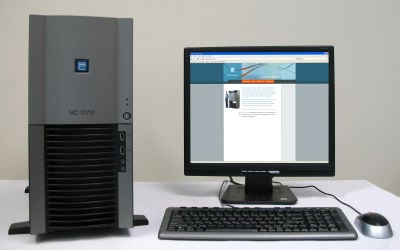HPC is on its way to reach out to consumers. We look today, for advice and counseling, to big firms like Gartners, Forrsters etc. But the tomorrow, which is today, is in all of our hands. HPC just happens to be that for us. Think of genome research, power issues, geographic and tectonic researches, meteorology, mining, oceanography, etc will happen in homes tomorrow.
Look at this news by RapidMind, where they are moving aggressively towards the regular x86 boxes.
News from Rapidmind:
Over a thousand developers of high-performance computing (HPC) and enterprise software are using RapidMind to realize the performance benefits of new multi-core processors. The RapidMind platform is being successfully leveraged in developing applications for database transactions, image/video manipulation, enterprise search, data mining, real-time data analysis, three-dimensional visualization, broadcast-quality encoding, medical imaging, film and TV content generation, image and signal processing, financial analysis, seismic analysis, and others.
“IBM customers understand both the opportunity and challenges caused by the shift to multi-core processors. RapidMind is addressing an industry-wide problem,” said Jim Comfort, vice president for optimized systems, IBM Global Engineering Solutions. “By partnering with RapidMind, IBM can deliver the products and expertise our customers need to gain a competitive advantage in this new era of multi-core processing. IBM and RapidMind are in a unique position to allow software organizations to realize new levels of performance on x86 processors, as well as unprecedented acceleration on IBM’s Cell blade systems.”
A very disruptive phenomena is when the "consumer becomes the king". And this time he/she will truly reign. All you have to do is invest a bit in it and you have a really fast machine at home. for instance look at SiCortex, which "The Register" is reporting to have thought out a SuperComputer PC for all of us. This is a real investment, look at it!
The new SC072 - code-named "Catapult" - fits 72 processors into a deskside unit that starts at less than $15,000. The system is a no brainer for SiCortex since it provides a more a digestible option for engineers, developers and those hoping to take the company's weird hardware for a test drive. In addition, the more compact unit lets SiCortex tap into a trend pioneered by now deceased Orion Multisystems of selling supercomputer class machines in a near PC form factor.

Imagine, in older times, innovation took years to really reach the consumer., like the birth of the first Cisco Router, quoting Time's june 9th, 1997 article:
For all its late promise, the firm was born into rather humble circumstances, the brainchild of husband and wife Stanford academics Leonard Bosack and Sandy Lerner, who were merely trying to exchange notes across the university's computer network. While Stanford's mainframes could crush even the most recalcitrant differential equations, they couldn't pass messages. The mainframes spoke a different language from the desktops at the library, and so on. The solution: a wire-stuffed box that performed a kind of simultaneous translation, enabling IBM machines to talk to Digital machines, wife to send grocery list to husband. By 1990, as the first hints of the Internet emerged, the company went public. The founding couple left, while Cisco began its sprint to stardom.
humble beginning, but this couple did sit next to a mainframe. They did sit at Stanford. Today the connection is on the web. We all are capable of doing lots of things and a lot more if we are connected together. Innovation coming through the community is the biggest wave that will overwhelm us all. Imagine a simple scenario:
My computer PC does not have capacity enough to run a 64 node Oracle RAC or SQL Server or Exchange Cluster or a openMosix cluster at home. At home, yes at home! My home is my temple. This little jammed up place next to our master bedroom, is my place where my brain "comes alive!"
Entering the age of super computers, which didn't come into Gartner's list, but like I said, it is there on my list. It ought to be there, on your list as an investor, and it surely will be there on that housewife's list who wants to run her massive company from home. Investments? A simple savings of some $ 50,000 and you would thank yourself that you quit the job that went to India and started a venture which might someday buy your ex-firm out!
So, are we seeing true innovation today? You ain't seen nothin' yet, baby!
Comments
Post a Comment